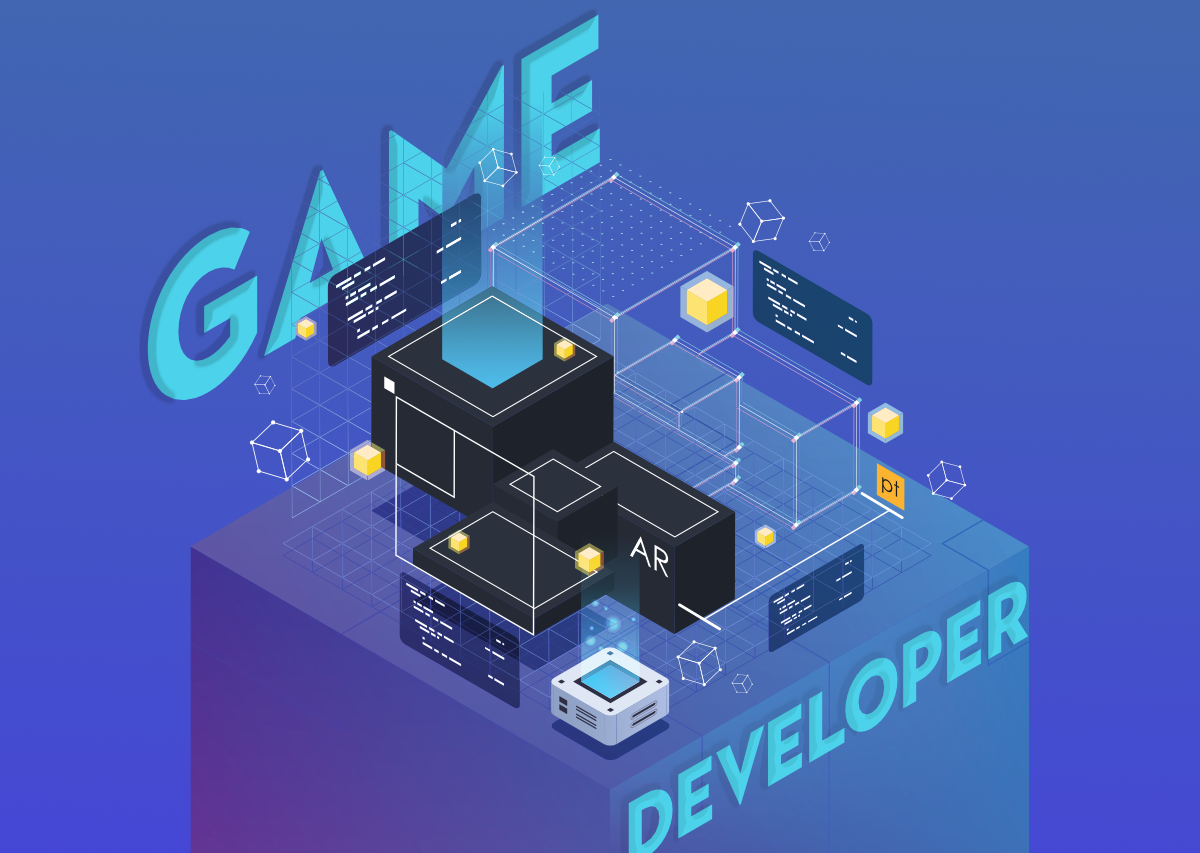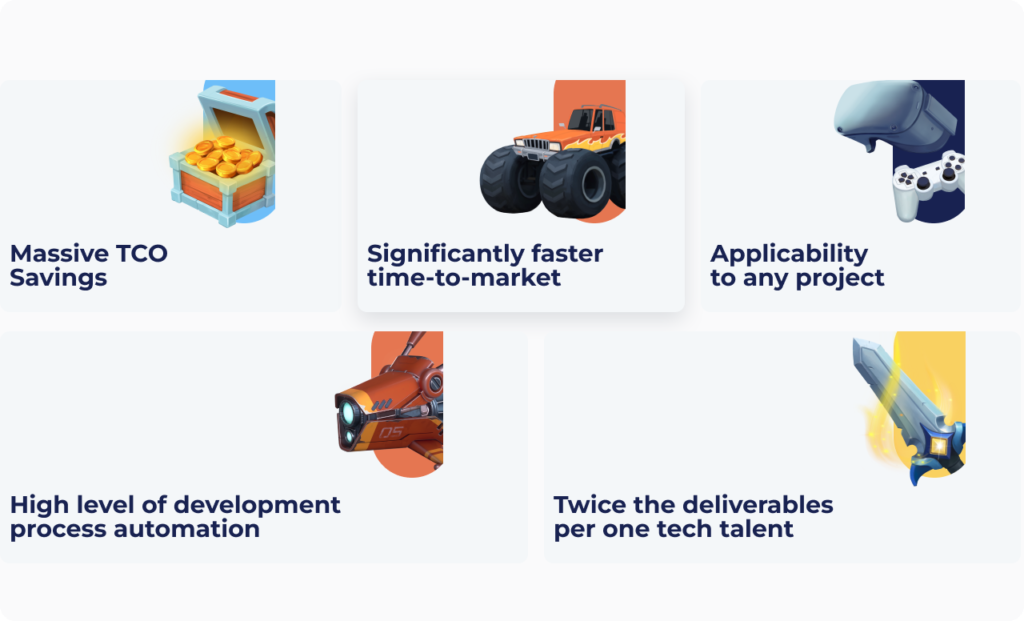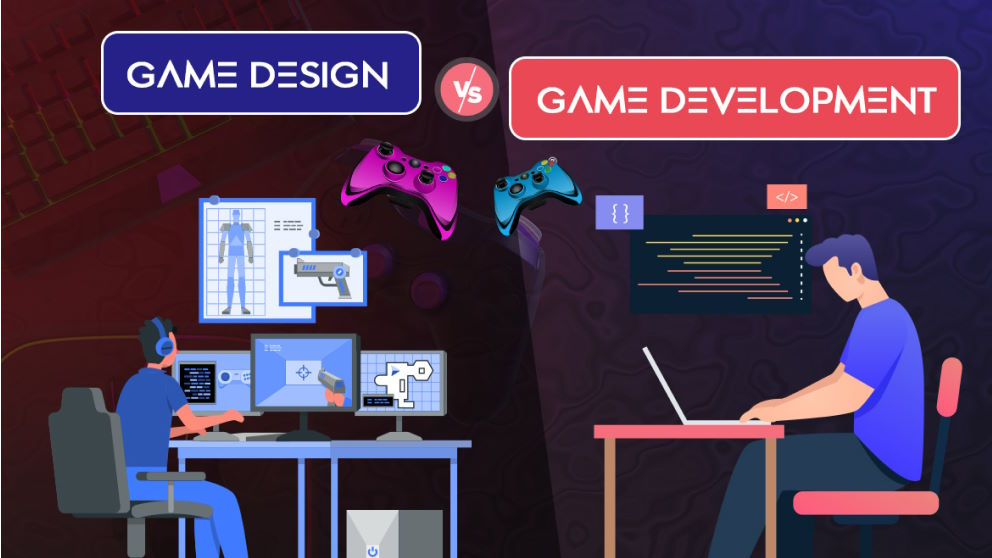Explore how Modern Game Development blends creativity, technology, and AI to craft immersive worlds. Learn how developers engineer emotion, collaboration, and adaptive storytelling in next-gen games.

Modern Game Development: Building Worlds, Not Just Games
Modern Game Development is no longer just about coding mechanics; it is about creating digital universes where players explore, feel, and evolve. Developers are now architects, artists, and engineers — combining AI, graphics, physics, and storytelling to craft interactive worlds that resonate with millions globally.
In an age where pixels carry purpose and algorithms breathe life into imagination, game developers stand as the architects of new realities.
They are the digital-era visionaries who don’t just build products — they build worlds. From cinematic storylines to vast open universes powered by artificial intelligence, modern game development has evolved into one of the most sophisticated forms of technological artistry ever conceived.
Yet beneath the spectacle lies an intricate dance between creativity and code, art and architecture, emotion and engineering. Today’s game developer must master all three — the storyteller’s empathy, the scientist’s precision, and the engineer’s discipline.
This is not just about making games. It’s about crafting interactive experiences that reflect humanity itself, one frame, one decision, and one line of code at a time.
1. The Game Developer as World Architect
Imagine a cathedral — every column meticulously aligned, every stained-glass window telling a story, every echo orchestrated by design.
Now, replace stone with code, and you’ll glimpse the modern game developer’s world.
Each game is an ecosystem, a self-contained universe with rules, aesthetics, and physics. Developers serve as architects of these digital civilizations, designing everything from how characters move to how players feel. The modern developer is both a builder and a philosopher — one who crafts spaces where humans explore meaning, competition, and connection.
In the UK, studios like Rockstar North in Edinburgh design immersive cityscapes that rival real-world detail, while in the US, developers at Epic Games create engines like Unreal 5 — not just tools, but frameworks for entire realities. These pioneers remind us that game development is architecture at its most creative — the architecture of possibility.
2. Tools of Creation: The Engines That Empower
At the core of this craft are the engines that power imagination.
Unreal Engine 5, Unity, and Godot are no longer mere platforms; they are creative ecosystems, fusing rendering technology, physics simulation, and artificial intelligence into seamless workflows.
- Unreal Engine 5’s Nanite and Lumen redefine realism — allowing developers to render near-cinematic quality assets at real-time speeds.
- Unity’s modular architecture makes it the go-to choice for mobile and indie developers worldwide.
- AI-assisted tools such as Copilot for Unity and ChatGPT-based code integration are cutting production time while amplifying creative scale.
In the UK, Creative Assembly and Team17 use these technologies to craft layered, emotionally resonant gameplay. In the US, Naughty Dog (of The Last of Us) and Insomniac Games (of Spider-Man 2) leverage proprietary engines to build narrative worlds so detailed that they blur the line between film and play.
The result? A new generation of developers with godlike creative control — shaping not just visuals, but how stories are felt.
3. Coding Emotion: The Science of Interaction

The true genius of game development lies not in mechanics, but in emotion engineering.
Every action, every reward loop, every challenge is designed to create psychological resonance. Developers translate human feeling into algorithms — scripting curiosity, triumph, and even heartbreak.
Consider the quiet dread in Resident Evil Village, the gentle melancholy of Journey, or the rebellious joy of Fortnite. Behind every emotion is a system of interactions, feedback loops, and timing crafted with surgical precision.
Modern game designers are, therefore, psychologists in disguise — manipulating pace, anticipation, and consequence. As neuroscientific insights merge with gameplay analytics, developers are learning not just to entertain, but to evoke, engage, and educate.
4. Collaboration: Where Art Meets Algorithm
The myth of the lone programmer has long been retired.
Game development today is a symphony of specialists — programmers, designers, 3D artists, animators, writers, composers, and UX researchers — harmonizing creativity and code.
Cross-functional collaboration has become the engine of innovation.
Tools like Perforce, Git, Jira, and Trello orchestrate workflows across continents, while agile methodologies enable rapid iteration and creative flexibility.
At Ubisoft’s UK studios, AI-based asset pipelines now allow teams to work in real-time collaboration, compressing production cycles that once took months into weeks. Meanwhile, Valve and Bungie have pioneered modular team structures where small creative pods function as autonomous innovation cells.
This shift transforms game development into a living ecosystem — one that adapts, grows, and learns like the worlds it creates.
5. Adaptive Narratives and Dynamic Worlds
In the golden age of interactive storytelling, narratives are no longer written — they are woven dynamically.
AI and procedural generation are allowing developers to build experiences that evolve based on player behavior.
Games like No Man’s Sky (UK) generate billions of planets algorithmically, while Cyberpunk 2077 (US/Poland collaboration) constantly expands through adaptive AI systems and narrative-driven patches.
This evolution marks the rise of living stories — where no two player experiences are identical. Developers now act as conductors of narrative potential, programming emotion through choice, consequence, and surprise.
The next frontier? Neural storytelling, where games may soon anticipate a player’s emotional state and adjust tension, dialogue, or environment dynamically.
6. The Rise of Indie Sovereignty

If AAA studios are the skyscrapers of digital worlds, indie developers are the craftsmen of creative authenticity.
The past decade has witnessed an indie renaissance — a surge of innovation powered by passion, open-source tools, and global accessibility.
From Supergiant Games’ Hades (US) to Hello Games’ No Man’s Sky (UK), these creators are proof that vision can outshine budget.
Indie developers embrace constraints as creative fuel.
They prototype faster, fail bolder, and connect directly with their communities through early access and live feedback.
Their success underscores a truth the industry once forgot: great games are built not on marketing budgets, but on heart, innovation, and purpose.
7. Beyond the Screen: XR, Metaverse, and Cloud Gaming
The boundaries of play are dissolving.
Where once we looked at screens, we now step into them.
Extended Reality (XR), Virtual Reality (VR), and Augmented Reality (AR) are pushing interaction into the realm of immersion. Developers are designing games where the world becomes the interface — blending physical and digital dimensions.
- UK’s XR studios in London and Manchester are pioneering educational and cultural VR experiences.
- US firms like Meta and Valve are leading the charge in metaverse engineering and virtual social spaces.
- Cloud gaming (through Xbox Cloud and NVIDIA GeForce Now) is democratizing access, making console-quality gaming available on any device.
The era of hardware constraints is ending. The new frontier is contextual gaming — adaptive, cross-platform, and persistent across devices.
8. Ethics, Inclusion, and the Cultural Power of Play
Games are no longer just entertainment; they are cultural artifacts that influence values, empathy, and social awareness.
As the world’s most interactive storytelling medium, they shape how generations perceive identity, diversity, and morality.
Developers, therefore, carry a profound ethical responsibility.
Designing inclusive worlds means more than adding diverse characters — it means embedding fairness in systems, accessibility in design, and empathy in narrative.
Studios across the UK and US are adopting inclusive frameworks like Microsoft’s Inclusive Design Toolkit and BAFTAs Ethical Games Charter.
Progressive developers are reimagining representation — not as compliance, but as creativity.
After all, the worlds we build digitally often outlive us. They must reflect the best of who we are.
9. Continuous Evolution: The Developer’s Journey
To be a game developer today is to exist in perpetual motion.
Frameworks evolve, tools transform, player expectations accelerate.
The most successful developers see learning as a lifelong profession — absorbing new engines, AI models, and narrative tools with relentless curiosity.
The rise of communities like GitHub, Stack Overflow, and GameDev.net has turned the global internet into a collaborative classroom.
Mentorship and community now define success as much as skill.
In both the UK and US, programs like Women in Games and GameDev Bootcamps are nurturing a new generation of developers who code with confidence — and conscience.
The message is clear: adaptation is the true superpower of modern development.
10. The Future of Game Development: Engineering Emotion in the Age of AI

The horizon of gaming glows with the promise of AI-driven creativity.
Procedural generation will become emotional generation — experiences that not only adapt to a player’s actions but to their mood, tone, and context.
AI companions will evolve beyond scripted lines, offering emergent behavior, empathy, and realism.
Developers will become AI directors, crafting algorithms that co-create stories in real-time.
Imagine a game that responds to your hesitation, learns your playstyle, and tailors its narrative around your fears and ambitions. That is not science fiction — it is the next phase of emotional computing, and developers are its architects.
As neural interfaces and emotion-recognition systems mature, we edge closer to a world where games will feel us as deeply as we feel them.
Conclusion: The Legacy of Digital Builders
At its core, modern game development is a dialogue between imagination and intelligence.
It is where art meets architecture, and where pixels evolve into poetry.
From the indie studios of London to the tech giants of California, developers are redefining human expression — building worlds that reflect our dreams, our fears, and our collective future.
They are not merely coding entertainment.
They are engineering emotion, designing destiny, and building the digital heritage of our time.
As the line between the real and the virtual continues to fade, one truth remains:
The best developers don’t just build games. They build worlds worth living in.


